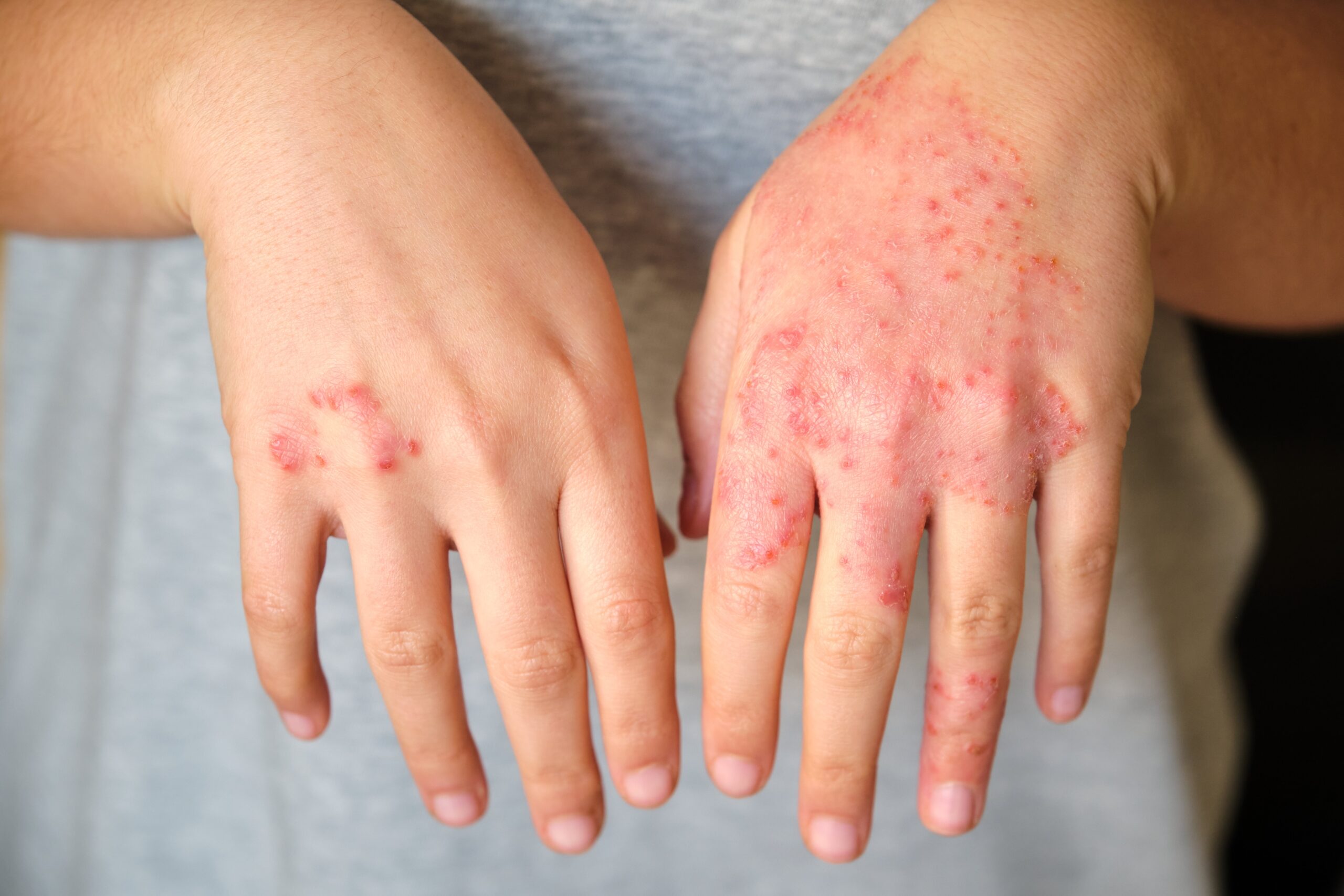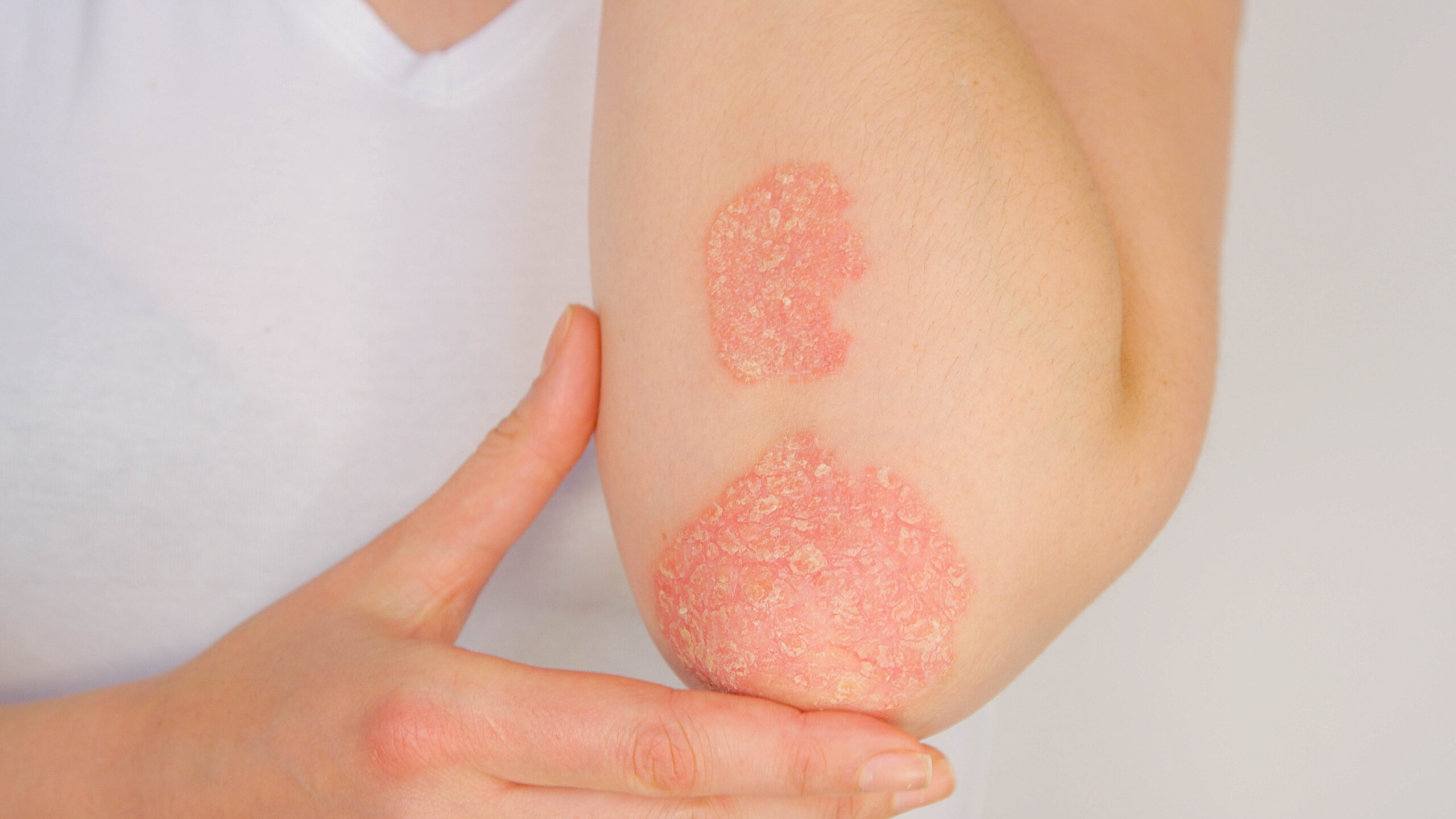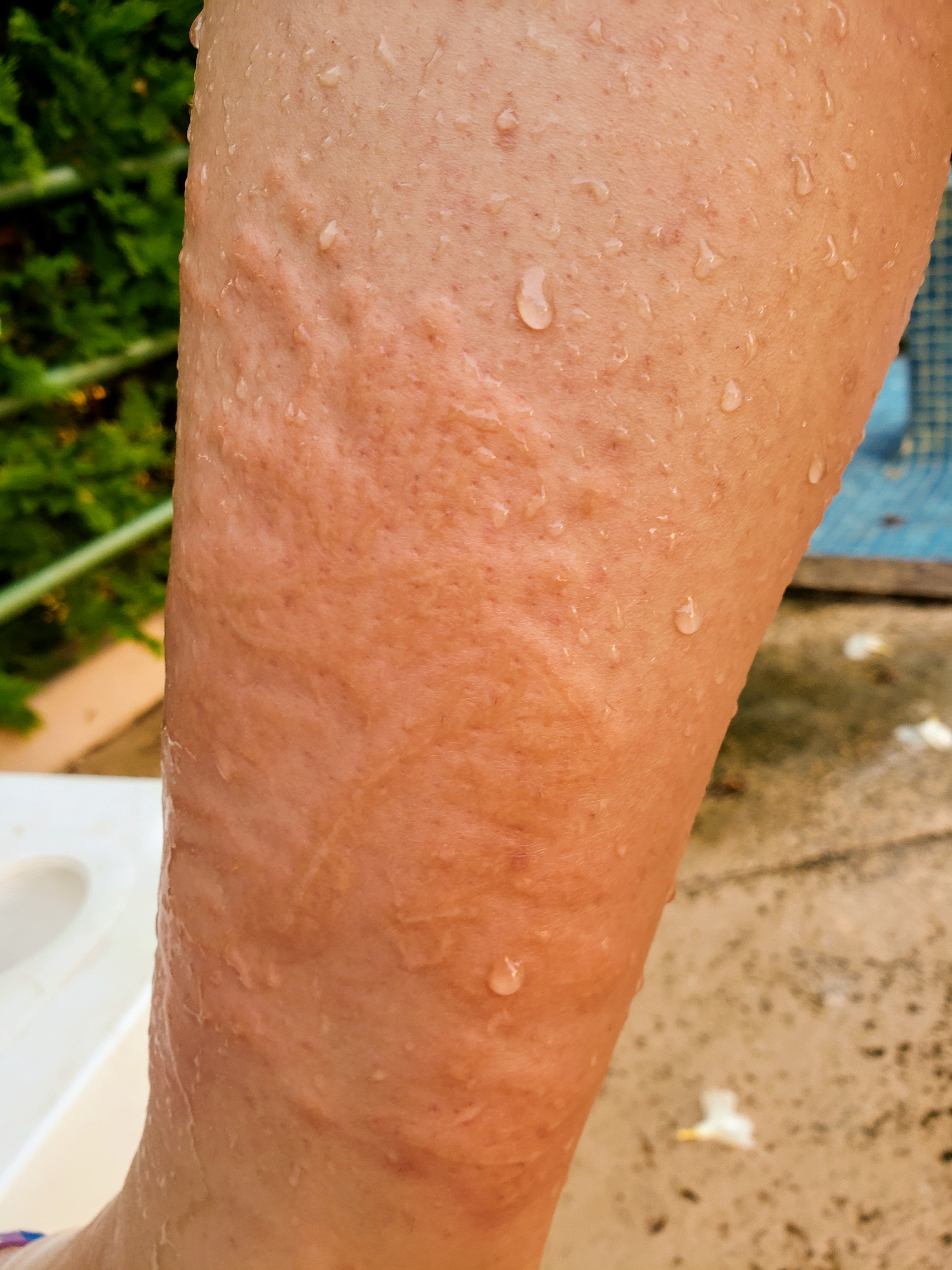Rosacea
Rosacea is known as a chronic skin rash occurring on the central part of the face, usually in patients between 30 and 60 years old.
There are multiple factors that are known to cause rosacea. For example, genetic, environmental, vascular, and inflammatory agents may be the cause of rosacea’s outburst. Moreover, chronic exposure to ultraviolet (UV) radiation can also influence the skin damage.
The skin’s innate immune response is directly linked with rosacea due to the presence of antimicrobial peptides, especially cathelicidins, in high concentrations. Cathelicidins play an important role in skin’s normal defence against microbes. Cathelicidins are essential in promoting infiltration of neutrophils in the dermis as well as dilating blood vessels. Neutrophils release nitric acid which also promotes vasodilation. If the fluid leaks from these dilated blood vessels, the swelling occurs. As a result, pro-inflammatory cytokines leak into the dermis which in return increases inflammation.
Matrix metalloproteinases (MMPs) like elastase and collagenase are also linked with rosacea. These enzymes are essential in remodelling the normal tissue, aiding the healing process in wounds, and promoting the production of blood vessels. In patients with rosacea, these enzymes are found in high concentrations which leads to cutaneous inflammation. Moreover, the skin gets thickened and hardened. MMPs can also activate cathelicidins which causes inflammation.
There is an observed linkage between hair follicle mites (Demodex folliculorum) and rosacea; however, the actual cause has not been determined yet.
Rosacea can also be triggered by different facial creams and/oils as well as topical steroids.
Usually, rosacea appears in the form of red spots (papules) and in rare cases, as pustules. These spots have a dome-shaped form. Unlike during acne, rosacea does not present any nodules, whiteheads, and/or blackheads. Depending on the type of rosacea, it can burst in red areas (erythemato-telangiectatic rosacea), swelling (phymatous rosacea), and scaling (rosacea dermatitis).
Patients diagnosed with rosacea experience frequent blushing or flushing. A red face may be due to constant redness and/or prominent blood vessels. Red papules and pustules tend to appear mostly on the forehead, nose, cheeks, and chin. In rare cases, trunk and upper limbs can also be affected. The facial skin may feel dry and flaky. Sun exposure, hot and spicy food or drinks can trigger even more redness. Individuals with sensitive skin may experience burning and stinging sensations as a reaction to makeup, facial creams, and/or sunscreens. As a result, due to affected eye areas, ocular rosacea can be diagnosed. It is usually characterized by having red, sore, and gritty eyelid margins with papules and styes.
Usually, rosacea is diagnosed through a regular clinical assessment performed by the dermatologist. A skin biopsy may be performed in order to observe any additional chronic inflammations and vascular changes. The Global ROSacea COnsensus (ROSCO) Panel recommends to asses rosacea based on diagnostic, major, and minor phenotypes. The diagnostic phenotype includes accessing the fixed centrofacial erythema in a characteristic pattern and phymatous changes. The major phenotypes include accessing papules and pustules, flushing, and ocular rosacea. Lastly, the minor phenotypes include assessing burning and/or stinging sensations, oedema (swelling), and dry appearance.
There are numerous treatment methods available for treating rosacea that are unique for every patient. For instance, different variations of oral antibiotics or topical treatments can be prescribed for the course treatment. Moreover, persistent blood vessels that cause rosacea can be successfully reduced with the non-invasive and non-ablative treatment method of Intense pulsed light (IPL).
Centre for Medical and Surgical Dermatology offers various treatment options for rosacea which are unique for every patient. For more information on this condition, visit the following link:
Centre for Medical and Surgical Dermatology offers IPL therapy as a treatment option for rosacea. For more information about this treatment option, visit the following link:
One Comment
Comments are closed.
Related Posts




Great post! Very interesting to read, love the written style.